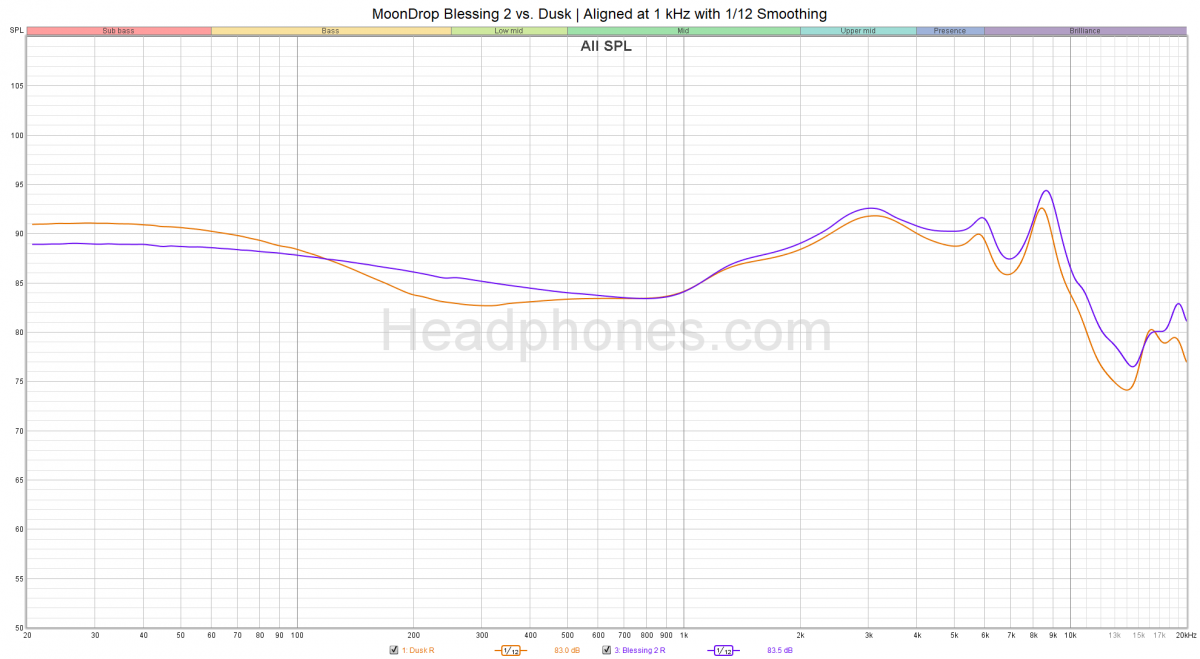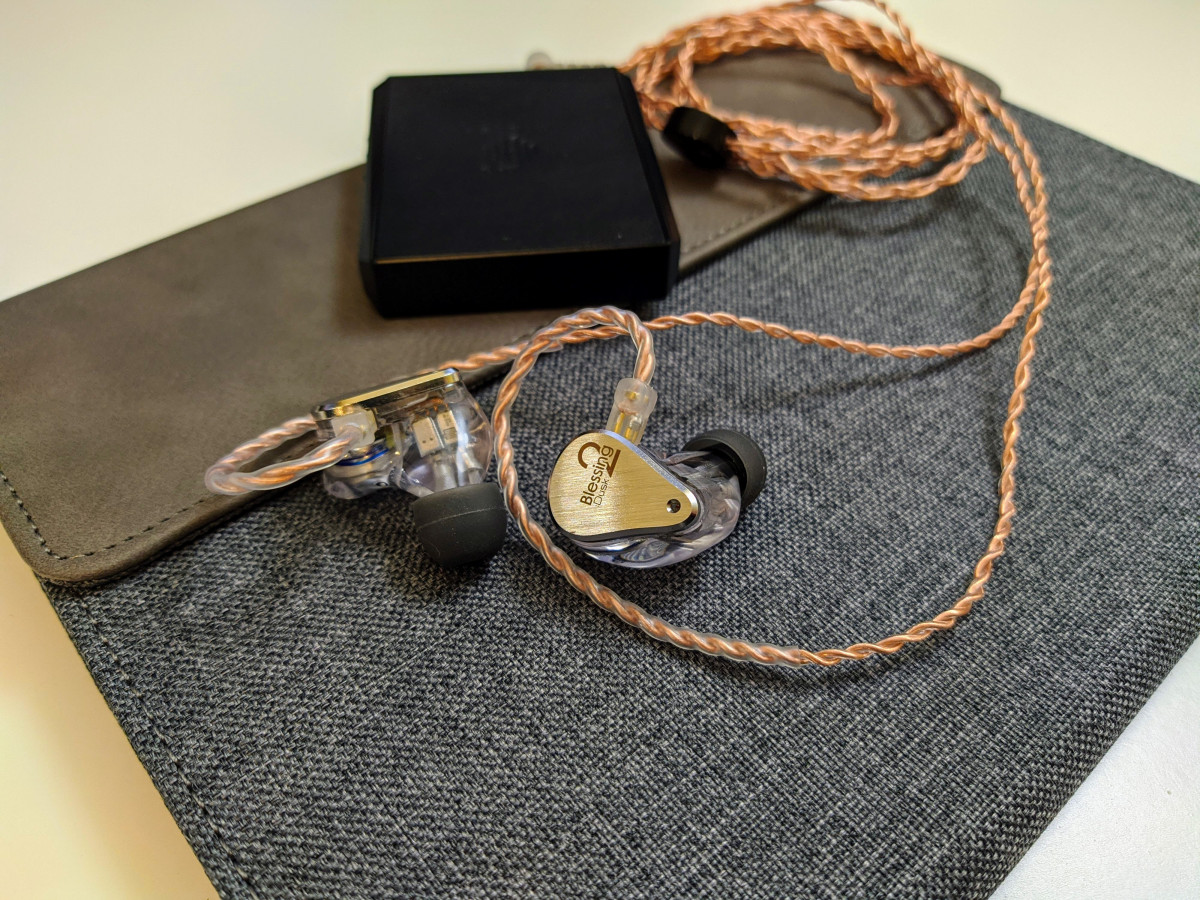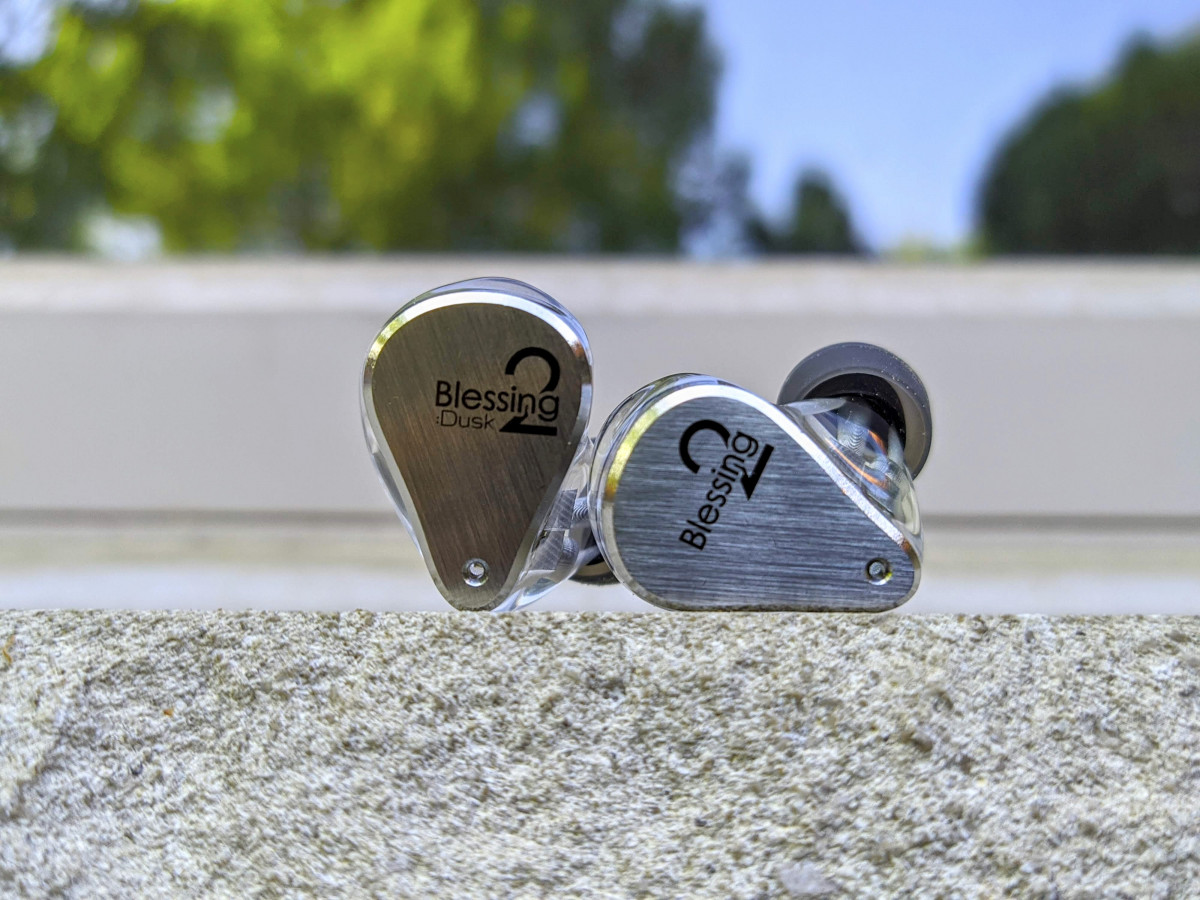MoonDrop x Crinacle Blessing 2 Dusk Review: Claiming the Throne

Review written by @Fc-Construct
Review unit on loan from headphones.com
Introduction
The MoonDrop x crinacle Blessing 2 Dusk is product of a collaboration between MoonDrop and well-known IEM reviewer crinacle with the aim of improving the tonal performance of the MoonDrop Blessing 2. Priced at a slightly higher $330 MSRP with an identical driver configuration at 1 DD + 4 BA, the major difference between the Dusk and the B2 is in its frequency response. Crinacle oversaw the tuning of the Dusks, making it align with his own tuning target that’s independent of MoonDrop’s VSDF target or the Harman target.
Last week, I reviewed the excellent MoonDrop Blessing 2 but purposefully avoided making too many comparisons to other IEMs in the mid-fi space. For this review, I’ll be taking a look at the Dusk and review it primarily by comparison to the Blessing 2. You’ll want to read my Blessing 2 review before as this article will build heavily from the information and analysis in that review.
What’s in the Box
The loan unit that I currently have did not come in its original packaging. However, the accessories are identical to the Blessing 2. In other words, a carrying case, an airline adapter, 6 pairs of silicon S, M, and L tips, and a 2-pin cable. The only difference is the box that the Dusks came in. It sports a different mascot on its cover.
Like the B2, the Dusk’s included cable is serviceable. My philosophy is to try it out first and then consider an upgrade if you don’t like its ergonomics. The shell of the Dusks has the same uncomfortably large nozzle. One important difference with the Dusks is that you cannot get a custom engraving for it. For $30, you have the option to get the Dusk mascot laser engraved on the faceplate but only that. Everything else about the build is the same as what I covered in my B2 review. It’s the same fully filled resin shell and attached metal faceplate. One thing that I forgot to mention in my original B2 review was its isolation, so I tested it with the Dusk while on a walk. Isolation is mediocre and wind noise is quite prominent. It’s something to consider as we start to transition out of the home office environment.
Sound
My first impression of the Dusks was that it is extremely well tuned but boring. This isn’t meant to be a knock on the Dusks; great tuning can sometimes be a quality all on its own, something I will touch on heavily later. Funnily enough, as I was doing research for this article and read Crinacle’s own notes on the behind the scenes work with the Dusk, he makes the same statement: “Note that the Dusk’s frequency response is my neutral target, but most would know my thoughts on neutrality: it’s boring.”
Like the B2s, the Dusk can be classified as neutral with a bass boost. However, that statement paints with the broadest of strokes and absolutely requires a deeper dive. Compared to the B2, the tuning of the Dusks is more agreeable. I consider the B2 to be quite well tuned already but the Dusks improves notably on the tonal balance. Gone is the rawness of the upper mids and the low end is greeted with depth that the B2s were oh so lacking.

Frequency response of the MoonDrop B2 and Dusk. Measurement taken with an IEC-711 clone microphone. Comparisons can only be made to other measurements taken by this specific microphone. The peak at about 8-9 kHz is an artifact of the microphone. It does not actually exist as depicted here.
Bass
The bass of the Dusk has an immediate sense of presence. It nicely “fills-the-room” so to speak without being overbearing. In comparison, the B2’s bass sounds almost tacked on with its dry and shallow sound. The Dusk’s bass is a serious improvement to my ears. The depth that was missing in the B2s is fully displayed here and the Dusks is able to boom where the B2 can only punch. It’s almost as if it’s a different driver altogether… is what I want to say except that the bass still sounds relatively textureless. Not enough to warrant a real complaint but enough to say that the actual driver itself is the limiting factor here. To be fair, this isn’t a complaint limited to the Dusk or B2. It’s a seemingly fundamental challenge for plenty of IEMs. At the very least, it exhibits a natural DD timbre compared to an IEM like the DUNU SA6 with its very obviously BA sound.
Like the B2s, the Dusk’s midbass note definition and resolution is excellent. I’d say separation is slightly behind the B2, only because I find that notes on the B2s are sharply defined and delineated, almost to the point of exaggeration, especially in the upper-midbass. The Dusk has a more realistic presentation while still maintaining outstanding resolution. This lets the Dusk have a sense of fullness that wasn’t available on the B2. My minor nitpick would be that when the Dusk hits a booming note, it sometimes lingers a moment too long. I would prefer it to be a little tighter, cleaning up the sound just that extra bit.

Mids
The mids of the Dusk is superbly crafted with a tonal balance that I can’t find anything to nitpick about. Pretty much all my complaints with the B2 were resolved. No longer do the upper mids overstep their boundaries with excess energy. The raw sound of the B2 has also been eliminated in the Dusk. Side-by-side, the Dusk actually cleans up the vocals of the B2 with a better lower mids balance. There’s no shoutiness or harshness to be seen in the upper mids. Nor is there any mud or bleeding from the bass. It has great clarity that doesn’t come off as overdone. Generally speaking, I think most people will prefer the Dusk’s mids unless someone really wants the vocal forwardness of the B2. And speaking of the vocals and other instruments… well there’s not actually a lot to speak about. They sound great in a boring way. Nothing stands out as being especially good or bad. Enjoyment is deferred completely to your music and I find it scales quite well with tracks that are better mixed and mastered while still sounding great with those that aren’t.
Treble
The treble of the Dusk is a tamed affair. Unlike the B2, it doesn’t lean bright. Rather, the treble of the Dusk mostly plays a supplemental role to the overall balance of the Dusk’s tuning. My preference would be a little more treble energy in the lower treble for a touch of snappiness but that’s about it. Following a similar story to the mids, the treble of the Dusk resolves my complaints about the B2. The brittle sound of the B2’s treble is nowhere to be found. It passes my hats/cymbals test easily enough. I don’t detect any treble peaks, harshness, or sibilance.
Though the Dusk has less treble energy and is subsequently less crisp sounding, treble resolution isn’t negatively affected. While lower treble notes don’t pop out at you like a top layer of notes like it does on the B2, I don’t find myself missing that. Notes are still well resolved; they just call less attention to themselves. It’s not a fatiguing IEM and I’d even say it’s fairly forgiving of poorer recordings due to its tamed nature.

Presentation
Remember at the start of the review where I said that great tuning can sometimes be a quality of its own? I find that with the Dusk, especially in well mixed tracks, this manifests as a pleasing sense of coherency that leads to musical resolution. What I mean by that is that the Dusk takes the notes being presented and respectfully individualizes them. It does so subtly – I hear new nuances to notes here and there that seem so obvious and straightforward on the Dusk but are masked on other IEMs. To use an audiophile term – they have great microdetail. There’s a comfortable sense of space in its stage. Though the soundstage isn’t much improved from the B2, the aforementioned sense of coherency on the Dusk provides greater breathing to instruments though improved layering. It brings depth to the soundstage, augmented by the slightly improved staging. This allows instruments to play with and around each other rather than on top of each other.
The B2 sounds a little flattened in comparison. Where the B2 presents its resolution and note definition with an upfront brashness, the Dusk excels at bringing background subtleties to life. The B2s sound more impressive at first listen as I’m drawn to the immediate step up in resolution versus other budget/mid-fi IEMs while the Dusk sounds boring in comparison. But over the two weeks that I’ve had them side by side, I’ve found myself gravitating towards the Dusk for its added dimension of depth and coherency. In food terms, think of the Dusk as having a sprinkling of an extra ingredient, like a dash of salt or a bay leaf, that rounds out the flavor. Not a night and day difference but enough to be noticeable and for me to prefer the Dusk.
The one area of improvement for the Dusk and B2 would be in their dynamics. Like many IEMs, they don’t slam as hard in the bass and soaring choruses or instrumental drops don’t have as much emotional weight behind them as I would like them to. These IEMs by no means sound badly compressed, its just that a wider dynamic range would be the cherry on top of an already excellent cake.

Should You Buy It?
Yes. It has the fundamentals of sound quality down and excels everywhere a great IEM should. Outside of anomalies in the budget-fi space, the Dusk is the best price-to-performance IEM I have heard to date. It has superb tonality, outstanding resolution for its price class, and solid presentation. To be honest, when I first listened to the Dusk after finishing my review for the B2, I was not expecting to be this positive about them. In fact, I was initially thinking that I preferred the B2 as I generally enjoy brighter sound signatures. But the more time I spent critically listening to the Dusk while writing this review, I grew more and more enamoured by it. At one point, I thought it might’ve even been recency bias. But having both the B2 and the Dusk on the same desk to compare, its clear to me that I like the Dusk better.
While the Dusk is not perfect IEM for me as I wish it had more texture to the bass, sharper treble, and better dynamics, it’s still beyond excellent. If I were still shopping around for mid-fi IEM, I would buy the Dusk in a heartbeat. In fact, I’m now trying to convince myself I don’t need it for my own collection. And don’t let the name “mid-fi” confuse you – that refers to a price class, not some linguistic box meant to impose arbitrary limits on sound quality. Simply put, if you think you can fit a 7 mm nozzle in your ears, the Dusk is absolutely worth a listen. To ignore the Dusk is to ignore possibly the best IEM that mid-fi has to offer.
-----
Initially as I wrote this review, I had planned to do the comparison to the B2 as well as a bunch of other IEMs I had on hand. But as it turns out, I kept writing and writing and ended up with enough material for two reviews. So I decided to split it up into two reviews instead. It’ll let me focus the scope of the reviews and make them easier to digest as most people probably don’t want to read through a 20-minute article. So stay tuned for the final installment of this three-part series!
-FC-Construct
---
Discuss the Blessing 2 Dusk on the HEADPHONE Community Forum.
---
